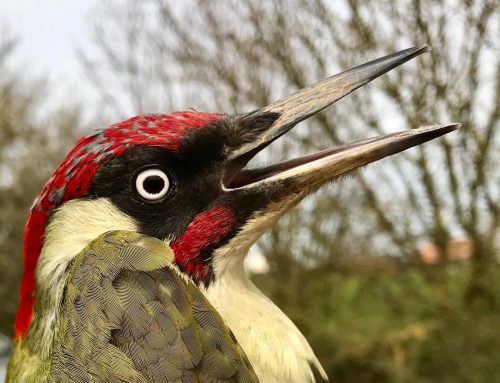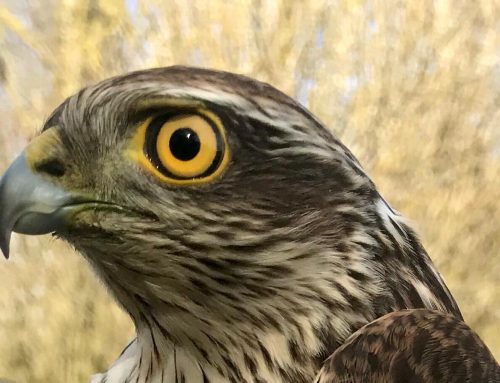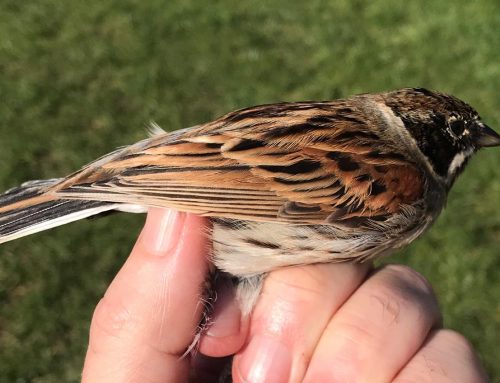It was myself, Barry, Sean and Graham this morning.
A real odd day, with the odd spot of rain. It however must have dropped over a passing Willow Warbler as that begun to sing close to where we were ringing.
It was a good morning, with plenty of retrap Yellowhammers, including one male bird at least 5 years old. Given, Yellowhammers have a 1 in 2 chance of making it to the following year and males have a lower chance. It’s probably because they are bright and yellow and perfect for Sparrowhawks to spot!
Totals were as follows:
| Species | New | Encounter | Total |
| Reed Bunting | 7 | 1 | 8 |
| Yellowhammer | 21 | 5 | 26 |
| Dunnock | 1 | 1 | 2 |
| Robin | 1 | 1 | 2 |
| Blue Tit | 3 | 11 | 14 |
| Blackcap | 3 | 3 | |
| Long-tailed Tit | 3 | 3 | |
| Great Tit | 2 | 4 | 6 |
| 8 Species | 38 | 26 | 64 |
Encounter is a term used for a bird that is already ringed. Encounters are the best form of data for us. For example, we can work out survival data and when an individual bird is using the site.
Usually, the older Yellowhammers turn up later in the morning, however perhaps due to the cold snap the birds that hatched prior to 2020 were in early this morning. Yellowhammers are late nesters. The average first egg date is the 29th of May, but the earliest recorded is May 2nd. They have 2, rarely 3 clutches and from laying the first egg (out of 3 or 4) to fledging is about 24 days.
Other birds seen included a Red Kite with its characteristic floppy wingbeats, probably a second-year bird; male (grey) and female (brown) Sparrowhawks, Buzzards, Jay, Green Woodpeckers, and Chiffchaffs. There were no signs of any other summer migrants.





Leave A Comment